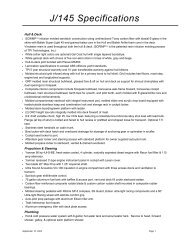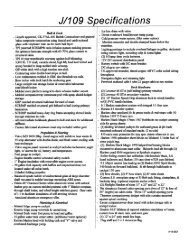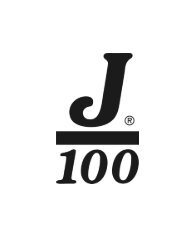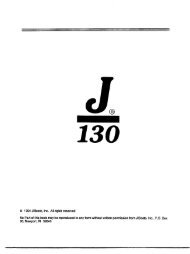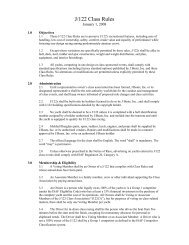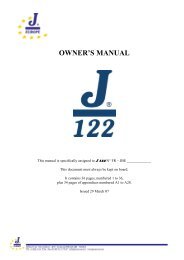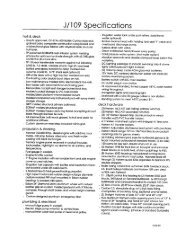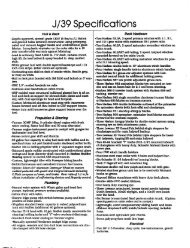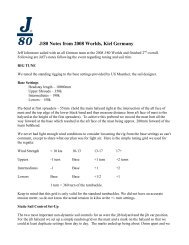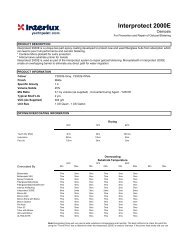J105 Owner Manual 2012.pdf - J/Owners
J105 Owner Manual 2012.pdf - J/Owners
J105 Owner Manual 2012.pdf - J/Owners
You also want an ePaper? Increase the reach of your titles
YUMPU automatically turns print PDFs into web optimized ePapers that Google loves.
J/105 <strong>Owner</strong> Guide ...................................................................................................................................................................................................................................................... 34 <br />
Safety caution: <strong>Owner</strong>s MUST leave the three position pole switch on the bilge pump panel (located <br />
in the nav station area) in the AUTO position in order for the bilge pump to perform properly. <br />
Please refer directly to pump manuals and/or web site information for more about best practices <br />
and maintenance of this component. Finally, it is prudent seamanship to carry replacement parts <br />
for all onboard pumps. <br />
Warning the bilge pumping system is not designed for damage control. The combined capacity of <br />
the system is not intended to drain the craft in the case of accident or damage. <br />
Head System <br />
The J/105 is equipped with one certified Raritan PHII marine head which is capable of <br />
discharging effluents into the standard 45 liter (12 gallon) holding tank or overboard. The <br />
system is easy to operate and with correct usage and proper maintenance, will provide many <br />
years of use. IMPORTANT -‐ <strong>Owner</strong>s should familiarize themselves with all local and federal <br />
regulations regarding proper discharge and avoid inadvertent discharge at all times. A Y-‐valve is <br />
fitted to the discharge line in order to direct the discharge flow to either the holding tank or <br />
overboard. It is shipped from the factory bolted into place such that the flow defaults into the <br />
holding tank. <br />
Before operating the HEAD, ensure you have read its manual thoroughly and understand the <br />
proper procedures. Silly mistakes can cause severe “head” aches at the worst possible time!. And <br />
a word to the wise <br />
PLEASE TRAIN YOUR GUESTS ON HEAD OPERATION. NEVER ASSUME THEY KNOW HOW TO <br />
USE IT. <br />
The head is a large pump which takes in seawater and flushes waste into the holding tank or <br />
overboard. The water intake seacock is located under the V Berth, and the discharge seacock is <br />
under the head sink. Remember the open/closed positions on these thru-‐hulls. It is good <br />
seamanship to close both the intake and discharge seacock when not in use. <br />
When seawater and effluent are pumped through the head, they’re pumped into the holding tank <br />
by the action of pumping the toilet handle. The waste discharge fitting on deck is provided so a <br />
Shoreside pump-‐out station can empty the tank. Care should be taken not to overfill the holding <br />
tank as effluent can block the vent hose and may damage the tank... or worse, burst the hose. If <br />
the toilet is difficult to pump, check to see if the holding tank is overfilled. “When in doubt, pump <br />
it out!” A great resource for understanding and maintaining a marine head system is a book <br />
called “Get Rid of Boat Odors” by Peggie Hall -‐ Seaworthy Publications. <br />
Recommended Head Cleaning Solutions: <br />
Holding Tank -‐ Use fresh water and one gallon of white vinegar solution… flush out twice. There <br />
are also several holding tank treatment solutions available through local marine stores. <br />
Head -‐ refer to the head owner manual for proper cleaning solutions and maintenance. <br />
Pumping a quart of fresh water type anti-‐freeze through the head system and hoses will prevent <br />
the seals and equipment from cracking. The following hoses are connected to the tank.



